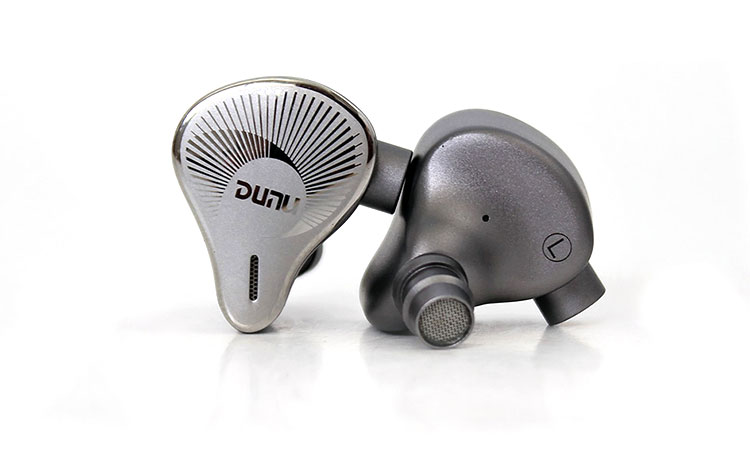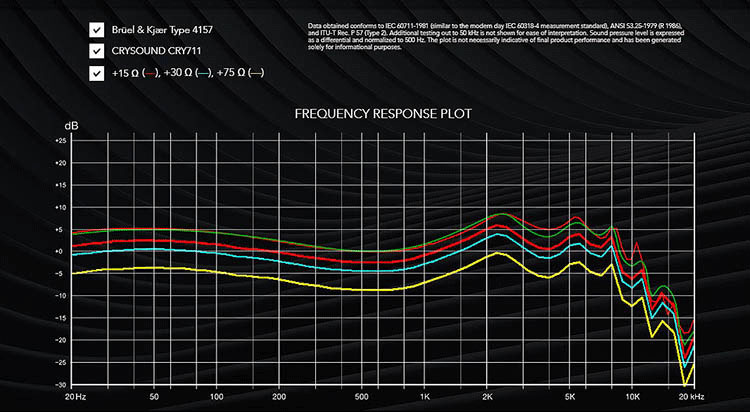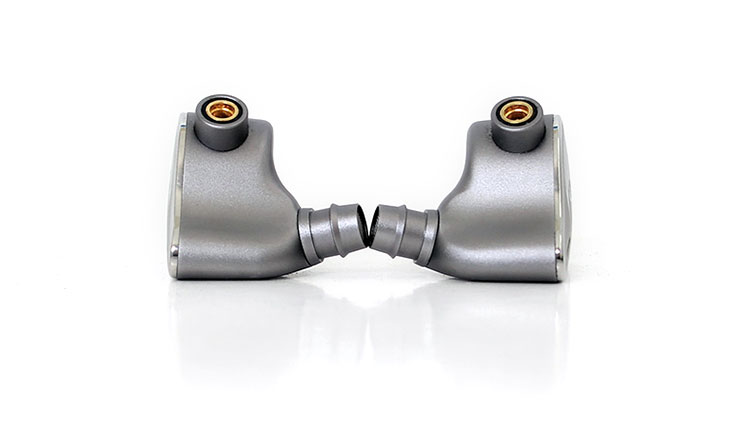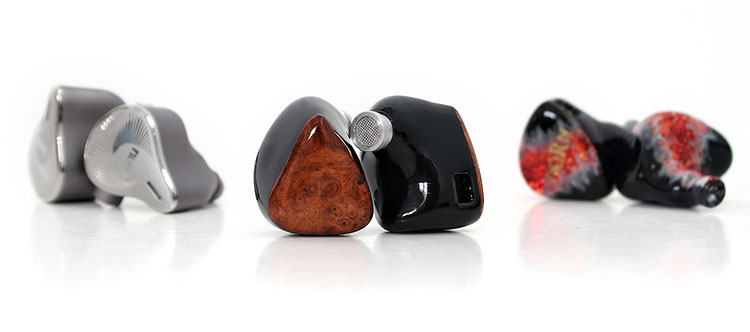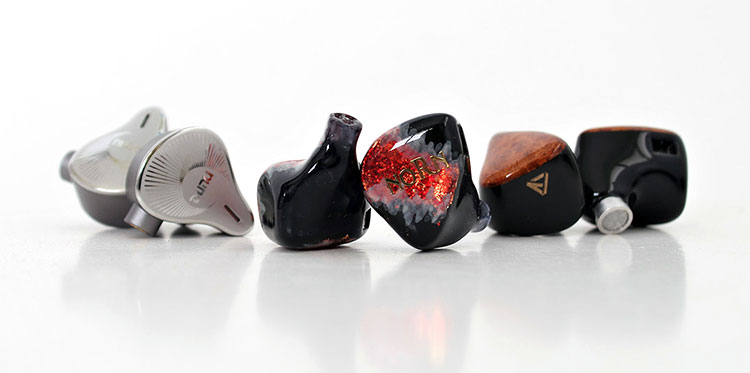Sound Impressions
Summary
The first thing that hit me with the DUNU EST 112 sound signature was the speedy, vibrant, and slightly bright top end with a full but rather neutral-toned bass response and a somewhat smooth midrange response that is a couple of decibels restrained compared to the top and bottom extremities.
The DUNU EST 112 tuning reminds me so much of one of the latest IEMs I reviewed which also has a rather large in millimeters dynamic driver for bass but the EST 112 treble is more refined and controlled in this case however the treble is still slightly too sharp in cases and tends to not be flat as it should be especially at loud listening levels.
These IEMs have a somewhat lively and dynamic presentation which is a common trait with these Sonion super tweeter setups. I do like the fact that DUNU showed some restraint in controlling those tweeters fairly well. Being familiar with the Sonion tweeters I can attest that the treble can easily get out of hand and be piercingly intense but it’s not so much in this case.
There is a very slight U-shaped signature here but I would consider it a fun amount of tilting and not overly done as to mask the midrange or become too unbalanced sounding or tilt too far from neutral.
Frequency Response
I always run a tone sweep test on every IEM I get my hands on because it equips me with a lot of information. When I ran the test on the DUNU EST 112 I went straight to the bass response which did not present issues or anomalies all the way through the dynamic driver’s range and up into the upper midrange.
It seems the bass response is very flat all through until it starts to drop in output right around the 25Hz area and then is barely audible to my ears around the 20Hz point and completely absent below 17Hz. When you scale upwards in frequencies the bass response seems flat even at the mid-bass section and as it transitions into the midrange there are no humps or peaks.
The midrange response was evenly produced and seemed flat up until you hit that 3 to 5 kHz area where there are some small peaks but in general have a soft enough character with good tonality but there are some slight imbalances there. There were also some peaks and drops beyond the 5K point all the way to past 10 kHz.
The treble response depending on the recording sounds fairly realistic and revealing and as long as you have restraint with the volume control these tweeters can perform fairly well by sounding crisp, airy with some top-end shimmer but most importantly have a realistic tone that makes drum symbols sound like symbols for example.
There is some treble emphasis here and it gives this set a slight metallic character sometimes in its sound signature but that could actually work well. Especially when listening to the taping on cymbals which are made of metal anyway so I guess that is where their realistic tone originates.
Musicality
There is a very slight amount of emphasis in the bass on the DUNU EST 112, but the bass tonality has a typical characteristic that Beryllium drivers have which is a speedy and fast responding bass that can keep up with fast-paced music.
I popped in Metallica’s Dyer’s Eve that has a very fast and heavy kick drum and the EST 112 kept up with the fast pace very well while still remaining deep and well behaved with a nice visceral feel behind every kick.
The EST 112 midrange is fairly smooth and well presented. There is I would say a rather high amount of detail. These dynamic Beryllium drivers if in fact are producing most of the midrange have a pleasing tone in my opinion with definition, clarity, and realism and mostly remaining on the contrary side of harsh, intense, or bothersome.
I love the way Black Hole Sun sounds on this IEM. No, the other one was done by Post Modern Jukebox and sang by Haley Reinhart. Talk about smooth. I love the way you could hear her lips smack together right before she starts singing demonstrating a good level of retrieving micro detail.
Since the midrange is somewhat restrained the gentle signature DUNU aimed for is apparent. The tuning combination with the slight elevation in bass response, smooth midrange, and a somewhat bright top-end make this set a fun listen but a somewhat neutral listen.
Staging
With the right song, the DUNU EST 112 can do staging very well and they also have good 3D capabilities by being able to project sound beyond the ear. Height, width, and depth, the EST 112 is capable of them all. I would not call them very wide but I do notice a larger space on each listener’s side versus front staging. It also seems the midrange response remains the narrowest within the staging.
I popped in a classic Rock CD, ELP Brain Salad Surgery, and was surprised many times with the recording with some exceptional 3D placement and each song seemed to be presented the way the recording engineer intended. The recording itself presented multi-directionality and precise imaging which was a priority with that recording in particular.
The bass and treble being a touch more prominent in the frequency spectrum tend to have more width within the staging. The treble is the best at staging and imaging. The bass has an omnidirectional aspect to it and seems to come from everywhere as it should be.
It seems that the highs are creating most of the three-dimensional information by having the ability to place a note mostly anywhere, while the midrange does have good imaging it does not go too far past the ear or too far forward.
Synergy
Did I mention how efficient the DUNU EST 112 is? You really do not need to push these with lots of power and any dongle DAC will do but they do, in fact like warm amplification. These IEMs have very good dynamic range and transient response even when used with a low power amplifier.
I will give you a perfect example of warm amplification. I ran both the iFi Audio Diablo and the Signature series. Both are from the same company and somewhat similar but the Diablo, although superior in sound quality is the brightest in sound signature. The DUNU EST 112 likes the Signature series better because it warms up the treble especially on the GTO filter firmware.
Since the Diablo is a detail-oriented device it tends to provoke that metallic character out of the EST 112 I was speaking of common with Sonion tweeters and balanced armature tweeters alike but it’s because the Diablo brings out the hidden highs in headphones. It also brings out flaws in recordings.
Somehow the DUNU EST 112 seems to mask bad recordings some if low-quality sources are used like MP3 files or even Youtube videos and since they are naturally bright it tends to make those sources sound as if the fidelity was better than the source specifications dictate.
Selective Comparisons
AYA Audio Siren
Technical
This particular IEM is another Sonion super tweeter-equipped model that takes a different route to the tuning and driver configuration. The only two elements similar between these two IEMs are the similar price and the shared tweeters.
The AYA Audio Siren also uses a dual Sonion EST combo to produce high frequencies similar to the EST 112. But the dynamic drivers in this case are swapped out for a pair of balanced armature bass drivers on each side. The midrange section also doubles up on the AYA Siren by using two BA drivers.
The two builds are totally different with contrasting looks. The EST 112 has an all-metal construction and the Siren has a resin design topped off with a wood faceplate and a metal output port.
One of my peeves with the Sirens is the packed-in accessories which to me lacks in tip selection but the cable assembly is rather nice. However, it does not come with swappable tips and only comes with a 3.5mm TRS plug and the price point merits multiple tips and connectors nowadays it seems.
Sound
Boy, you’d better like midrange and highs if you plan to buy the AYA Sirens because that is their forte but is also their downfall because of the accentuated treble. The tuning on this IEM brings these tweeters forward and it was a tuning decision by AYA to make these sound bright and treble forward.
If we go from bottom to top and compare the bass first you will probably pick the EST 112. Of course, it’s because of that Beryllium dynamic driver and to be honest, I am not a fan of BA bass but the Sirens do have a clean-sounding bass that does satisfy compared to other BA IEMs but it lacks punch and impact.
One note, you have to pick the right tips on the Sirens or you will get no bass. The EST 112 is not as finicky and are content with most tips, so I just used them with some regular black rubber tips.
On the staging scene, the Sirens are wider, especially around the midrange frequencies. The high frequencies roughly occupy the same space with similar 3D capabilities. One thing is for certain the midrange response on the Sirens is more forward sounding plus has more presence in comparison.
Kinera Norn
Technical
The Norn is another IEM that is in the same price bracket but is tuned differently plus construction is also contrasting with a resin-shaped shell and a resin faceplate artistically finished and handcrafted. The EST 112 is hand-assembled but has no hand-crafted artistry and leans to an industrial look.
In the accessory department, both sets step it up and include a cable assembly with multiple tip assortment and you get balanced plus single-ended connectivity in the box with no need to outsource a wire for that purpose. Versatility is always a plus but to be honest I like the catch and hold MMCX connector concept and is my preference of the two.
The tip selection is almost identical but the Kinera Norn includes two sets of back rubber bass tips. The rest of the accessories list is similar and the Kinera Norn comes with a storage case alike but with a magnetic lock instead of a zipper.
One area that I prefer the EST 112 over the Kinera set is the connectivity you get. They both have a very nice stock cable. I do like the Kinera cable more but come with adapters, unlike the DUNU cable that comes with an innovative swappable tip system.
Sound
The sound signature of both these IEMs has some similarities in that the midrange has a smooth and relaxed tone with a decent amount of detail. Both sets produce bass well but I sense a slight gain in body with the DUNU.
However, the Norn Tesla driver likes to be pushed harder. For example, it likes IFI Xbass and benefits most while the DUNU EST 112 dislikes boosting and artificiality comes through if pushed too hard but stock it already has the heavier bottom end.
Most of the differences here lie in the high frequencies and spaciousness. The Norn high frequencies are rather relaxed in tonality but do lose a small amount of top-end detail and shimmer. The highs on the EST 112 are sharper and more defined but that could also be a con if the recording is too bright and might reveal those flaws.
One aspect of the Norn that seems better is the spaciousness in the midrange which seems wider with a deeper sense. Midrange height I would consider equal in both sets and the high frequencies also image similarly. The EST 112 has a more personal soundstage with more midrange intimacy.
Our Verdict
If the words vibrancy, punchy bass, smooth midrange with a particularly good accessory list tickle your innards then it sounds like you might like the DUNU EST 112. These IEMs are well constructed which seem ready for a lifetime of use and out of the box you have five possible ways to connect.
Perhaps some might find the treble too bright but I find it to be accentuated for people who like revealing high frequencies. Any less high-frequency output and you lose detail and I remind you there is a difference between accentuated and exaggerated.
Most people would be happy with The DUNU EST 112 which can be driven comfortably by any device with a sound signature that is appealing, revealing, and most of all rather pleasing. You can safely put these on your list of possible candidates.
DUNU EST 112 Specifications
- Frequency Response 5Hz to 40 kHz
- Sensitivity 110 +/- 1db at 1 kHz
- THD less than 0.3% at 1 kHz
- Drivers Dynamic 3rd generation 13.5mm driver dual side beryllium coating
- 1x Knowles BA tweeter
- 2x Sonion Electret Electrostatic EST super tweeters
- Included Cable Length 1.2m
- 4 core high purity Mono Crystalline silver-plated cable
- Patented catch and hold connector modular system
- Included terminals
- 4.4mm TRRRS balanced,
- 3.5mm TRS single-ended,
- 2.5mm Balanced,
- 6.35mm TRS adapter

